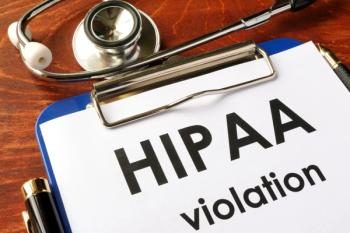
Patient Communication Preferences Vital in Care Compliance
What you communicate to patients should also consider how you reach them. And with the variety of messaging available, there is also varying patient preference.
Despite the emphasis in creating apps and communicating with patients via text message, a quarter of patients want their doctor to contact them via e-mail, and nearly 43 percent would prefer to be reached via a phone call, according to a recent FICO report on mobile technology.
Asking patients about their preferred method of communication is simple but important in getting patients to follow through on the messaging, said healthcare consultant Marcia Tourtellott, who presented "Using Technology to Drive Patient Action" at the
"If I communicate with you in a channel you prefer, it's going to be more effective," she said.
Accommodating the Patient
With the proliferation of digital communication, there are myriad ways to communicate with patients today including text message, app-initiated reminders, e-mail, and secure messaging. Patient portals are becoming increasingly popular, but some people still prefer the classic phone call or mailed letter for communication. The best practice in determining how to communicate with patients is to ask them each time they check-in, verify their contact information, and capture any consent needed to utilize those channels.
Tourtellott pointed out that, in addition to capturing the preferred communication method, knowing other personal preferences can also help ensure compliance or response on behalf of the patient. For example, medical practice staff should note the ideal time for communication, if there are reminder preferences and preferred language of communication. "This helps you be more personal in your messaging so it's more effective," Tourtellott said.
One Touch Point, One Goal, One Action
"As a society, we tend to try to put a lot of information in one message, and that's not very effective," Tourtellott said. During her presentation, she used the example of sending a reminder to get a flu shot. There's a tendency to provide too much information-what the flu is, why the flu shot is important, where it can be received, etc.-when the patient communication should simply state one clear message: Get a flu shot.
Effective reminders move patients to action, she noted. The message should state a clear goal timely to the action desired. It should be easy for the patient to take action and delivered via the preferred communication platform. Additionally, the content should be direct and to the point, and be stated at an appropriate health literacy level, in the preferred language, and actionable.
Tourtellott also noted that if you want a patient to take action, this is not an appropriate time to provide educational material as well.
Choosing the Right Technology
Though patients may have preferred forms of communication, Tourtellott pointed out there isn't a one-size-fits-all approach in relaying information. Depending on the audience and objective of the communication, consider using different methods. "Ask yourself: 'What is best suited for the audience and what I want to accomplish?'" she suggested.
Automated voice calls tend to work well for reminders and to capture data, and older patients generally respond well to this particular method. E-mail is good for reminders, detailed instructions, and information that should be saved such as test results. Established patient portals are a good place to store more informational and educational materials as well as videos for reference. The patient portal may also be a good place to store laboratory and procedure results, which can be revisited by the patient at their convenience.
Though there is a move to use more text messaging in communication, Tourtellott notes this method is particularly effective when communicating with younger and low income patients, and if there is a need to communicate specific directions or timely actions. This population is more likely to have access to text-enabled phones as opposed to the Internet to consistently access health information.
Newsletter
Optimize your practice with the Physicians Practice newsletter, offering management pearls, leadership tips, and business strategies tailored for practice administrators and physicians of any specialty.













